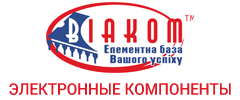Збирач потоків
onsemi completes acquisition of Qorvo’s SiC JFET business for $115m
КПІ імені Ігоря Сікорського реалізує міжнародний проект з підвищення спроможності місцевих громад
Національний технічний університет України "Київський політехнічний інститут імені Ігоря Сікорського" у партнерстві з Познанською Політехнікою (Польща) розпочав реалізацію масштабного міжнародного проекту під назвою «Підвищення спроможності місцевих громад протидії кризовим ситуаціям». Проект фінансується Програмою НАТО "Наука заради миру та безпеки" ( SPS G6119) і має на меті посилення стійкості місцевих громад України та Польщі до кризових викликів.
I was sure that this is capacitor... Until I read label on this thing
 | submitted by /u/NergoN123 [link] [comments] |
How neon lamps can replace LEDs in AC-powered designs

It’s not difficult to drive an LED indicator from the AC line, but it requires many active and passive components. It also poses safety challenges. EDN and Planet Analog blogger Bill Schweber explains how engineers can replace LEDs with neon lamps to design AC power-on indicators while addressing modern design challenges.
Read full story at EDN’s sister publication, Planet Analog.
Related Content
- The burned-out bulb mystery
- Use Light Bulbs as Current Limiters?
- When the AC line meets the CFL/LED lamp
- An LED ‘Filament’ Bulb: Not a Contradiction
- Gas Discharge Tubes: Old Protection in a New Bottle–Literally
The post How neon lamps can replace LEDs in AC-powered designs appeared first on EDN.
EPC introduces fully configured motor drive inverter reference design
Партнерство з Іnstitut Polytechnique de Paris
КПІ ім. Ігоря Сікорського розпочав наукове партнерство з Іnstitut Polytechnique de Paris, яка об’єднує 5 найкращих французьких інженерних шкіл (École Polytechnique, ENSTA Paris, ENSAE Paris, Telecom Paris і Telecom SudParis).
Старий Новий рік можна зустрічати не лише в ніч проти 14 січня
Цікаво, чи буде хтось і тоді якось відзначати "старий" Новий рік? І взагалі, наскільки коректно називати так лише юліанське новоліття?
CNC Soldering Definition, Process, Working, Uses & Advantages
CNC (Computer Numerical Control) soldering is an automated process where soldering tasks are performed using a programmable CNC machine. It allows precise control over the soldering process, ideal for repetitive and intricate soldering tasks in electronic manufacturing. The CNC system guides the soldering tool along pre-defined paths to achieve accurate solder joints.
How CNC Soldering Works:- Design Input: The process starts with CAD/CAM software to create a digital design of the soldering task.
- Programming: The design is converted into machine-readable G-code, which guides the CNC soldering machine.
- Machine Setup: The soldering tool (e.g., soldering iron, laser, or ultrasonic tool) is mounted on the CNC arm.
- Execution: The machine follows the programmed path, precisely applying solder to designated areas, ensuring consistent quality.
- Inspection: Automated or manual inspection ensures solder joints meet required standards.
- Preparation:
- Load the components and PCB (Printed Circuit Board) onto the machine.
- Input the soldering design and settings.
- Heating and Solder Application:
- The CNC tool applies heat to the solder and component leads.
- Solder flows to form a secure joint.
- Cooling:
- The joint is allowed to cool naturally or with cooling systems to solidify.
- Quality Check:
- Joints are inspected for accuracy and integrity.
- Electronics Manufacturing: Ideal for PCBs in consumer electronics, automotive electronics, and medical devices.
- Prototype Development: Rapid soldering of prototype boards with consistent quality.
- Aerospace and Defense: Precise soldering for high-reliability applications.
- LED Assembly: Used for accurate placement and soldering of LED components.
- Telecommunications: Efficient soldering of intricate circuit boards for communication devices.
- Precision: Ensures accurate soldering with minimal errors.
- Consistency: Delivers uniform quality across all joints.
- Speed: Automates repetitive tasks, reducing production time.
- Scalability: Suitable for both small-scale and mass production.
- Safety: Minimizes manual handling, reducing risks to operators.
- Versatility: Compatible with various soldering tools and techniques, including laser and ultrasonic soldering.
- High Initial Cost: Significant investment in CNC machines and setup.
- Complex Setup: Requires skilled personnel for programming and maintenance.
- Limited Flexibility: Less adaptable to on-the-fly changes compared to manual soldering.
- Material Compatibility: May not suit all types of soldering materials or components.
- Maintenance Requirements: Machines need regular calibration and upkeep.
CNC soldering is a cornerstone of modern electronics manufacturing, combining efficiency and precision while offering cost-effective solutions for high-quality soldering needs.
The post CNC Soldering Definition, Process, Working, Uses & Advantages appeared first on ELE Times.
Wifi Light Switch Meaning, Types, Working, Benefits & Applications
A Wi-Fi light switch is a smart device that allows you to control your lights remotely using a smartphone, voice assistant, or automation system. It connects to your home Wi-Fi network, enabling you to manage lighting from anywhere via an app or compatible smart home ecosystem.
Types of Wi-Fi Light Switches:- Standard Wi-Fi Switch: Replaces traditional light switches, offering basic on/off functionality remotely.
- Dimmer Wi-Fi Switch: Allows you to adjust light brightness levels.
- Multi-Way Wi-Fi Switch: Designed for controlling lights from multiple locations, such as at the top and bottom of stairs.
- Touch Wi-Fi Switch: Features a sleek touch-sensitive panel for manual control.
- Voice-Activated Switch: Compatible with voice assistants like Alexa, Google Assistant, or Siri.
- Switch with Scheduling: Includes timers and scheduling features for automated lighting.
- Connectivity: Connects to your home Wi-Fi network.
- Integration: Controlled through a smartphone app or smart home system.
- Signal Transmission: Commands are sent via Wi-Fi to the switch, triggering the connected lights.
- Additional Features: May include energy monitoring, scenes, and integration with other smart devices.
- Home Automation: Seamlessly integrate with other smart devices for automated lighting.
- Energy Efficiency: Optimize usage by controlling lights remotely.
- Enhanced Security: Schedule lights to mimic occupancy when you’re away.
- Convenience: Adjust lighting without needing to be in the same room.
- Customizable Ambiance: Use dimmer switches to set the perfect mood.
- Install the Switch: Replace your standard switch following manufacturer instructions (may require neutral wire).
- Connect to Wi-Fi: Use the app to link the switch to your home network.
- Configure Settings: Customize lighting schedules, dimming levels, and smart home integration.
- Control via App or Voice: Use the app or a voice assistant for on-the-go operation.
- Remote Control: Manage lighting system from anywhere using a smartphone.
- Energy Savings: Optimize usage and reduce unnecessary energy consumption.
- Convenience: No need to physically interact with switches.
- Customization: Create schedules, scenes, and automations tailored to your lifestyle.
- Scalability: Expand your smart home system with additional switches and devices.
- Enhanced Aesthetics: Sleek designs complement modern interiors.
Wi-Fi light switches are a perfect blend of functionality, efficiency, and style, making them a great addition to any smart home.
The post Wifi Light Switch Meaning, Types, Working, Benefits & Applications appeared first on ELE Times.
Залучаємо до роботи нових партнерів
Наш університет продовжує примножувати досягнення в гуманітарному розмінуванні та протимінній безпеці. Ми не зупиняємося на досягнутому й залучаємо до роботи нових партнерів.
India Budget 2025: Tech Sector Eyes Strategic Investments and Policy Reforms for Growth and Innovation
The upcoming Union Budget 2025 is generating significant anticipation within India’s tech ecosystem, as stakeholders call for increased investments and policy reforms to drive innovation, self-reliance, and global competitiveness.
Key Expectations:
- Semiconductor Ecosystem Boost: Industry leaders expect the government to announce additional incentives under the Production Linked Incentive (PLI) scheme to accelerate India’s semiconductor manufacturing ambitions, especially in light of ongoing global chip shortages.
- AI and Emerging Technologies: Increased funding for AI, blockchain, quantum computing, and IoT is sought, alongside initiatives to establish India as a global hub for AI research and innovation. Stakeholders also anticipate a clear roadmap for ethical AI governance.
- Data Localization and Cybersecurity: Strengthened support for data infrastructure, cybersecurity frameworks, and compliance with the Digital Personal Data Protection (DPDP) Act, ensuring both security and ease of doing business.
- Startup Ecosystem Support: Startups are hoping for relaxed compliance norms, enhanced funding avenues, and tax reliefs to stimulate innovation and attract global venture capital.
- Digital Public Infrastructure: Expectations include investments in 5G rollout, public digital platforms, and rural broadband expansion to bridge the digital divide and foster inclusivity.
- Green Tech Focus: Tech players anticipate policies promoting green energy solutions, energy-efficient data centers, and EV technology development.
The Budget 2025 is expected to solidify India’s position as a global tech leader while addressing long-term growth goals and technological self-reliance.
The post India Budget 2025: Tech Sector Eyes Strategic Investments and Policy Reforms for Growth and Innovation appeared first on ELE Times.
Government May Extend Feedback Deadline for DPDP Act Draft Rules to Ensure Comprehensive Input
The Indian government is considering extending the deadline for public feedback on the draft rules of the Digital Personal Data Protection (DPDP) Act by an additional two weeks beyond the initial February 18, 2025, cutoff. This potential extension aims to provide stakeholders with more time to thoroughly review and comment on the proposed regulations.
The Ministry of Electronics and Information Technology (MeitY) released the draft rules earlier this month, initiating a 45-day period for public consultation. In a recent industry meeting held in New Delhi, Union Electronics and Information Technology Minister Ashwini Vaishnaw emphasized the government’s commitment to conducting comprehensive consultations to ensure all stakeholder perspectives are considered. The objective is to balance innovation with regulation, fostering an environment conducive to technological growth while safeguarding personal data.
Attendees of the consultation included representatives from major technology companies such as Snap, Google, Meta, and OpenAI, as well as industry bodies like Nasscom, Broadband India Forum, and the Data Security Council of India (DSCI). Key concerns raised during the discussions encompassed the potential compliance burdens associated with issuing new notices to existing users and the implications of proposed data localization requirements, which some fear may conflict with international regulations.
The DPDP Act, enacted in August 2023, seeks to establish a comprehensive framework for the processing of digital personal data in India, balancing individual privacy rights with the necessity for lawful data processing. The draft rules detail provisions related to data fiduciary responsibilities, consent management, data breach notifications, and the processing of children’s personal data, among other aspects.
Stakeholders are encouraged to utilize the extended consultation period to provide detailed feedback, ensuring the final regulations effectively address the diverse interests and concerns within India’s digital ecosystem.
The post Government May Extend Feedback Deadline for DPDP Act Draft Rules to Ensure Comprehensive Input appeared first on ELE Times.
Microsoft Commits $3 Billion to Expand AI and Cloud Infrastructure in India, Aiming to Train 10 Million by 2030
Microsoft has announced a $3 billion investment to expand its Azure cloud and artificial intelligence (AI) capacities in India over the next two years. This move emphasizes India’s importance as a key growth market for technology, given its expertise and cost-effectiveness. Additionally, the investment will focus on upskilling Indian professionals in AI, building on Microsoft’s plan to invest $80 billion in AI-enabled data centers. Microsoft CEO Satya Nadella highlighted India’s significant contributions to AI projects, particularly through GitHub Copilot, and noted that India is projected to have the largest developer community by 2028. Microsoft plans to train 10 million people in AI by 2030, following the upskilling of 2.4 million individuals last year. The investment reflects the ongoing competition among U.S. tech giants to capture and nurture technological talent in India.
This strategic expansion aligns with Microsoft’s broader vision to support India’s growing digital economy and underscores the nation’s pivotal role in the global technology landscape. By enhancing its infrastructure and focusing on skill development, Microsoft aims to empower individuals and organizations across India, fostering innovation and contributing to the country’s long-term competitiveness in the AI domain.
The post Microsoft Commits $3 Billion to Expand AI and Cloud Infrastructure in India, Aiming to Train 10 Million by 2030 appeared first on ELE Times.
India to Host Over 620 Global Capability Centres by 2030, Driving $105 Billion Market Growth
India is poised to host over 620 Global Capability Centres (GCCs) of Forbes Global 2000 companies by 2030, marking a nearly 40% increase from the current 450 companies operating 825 such centres, according to a study by consulting firm ANSR.
This expansion is expected to boost the talent base at these GCCs by 45%, reaching 1.9 million professionals. Notably, 45% of existing GCCs have expanded their operations across multiple Indian cities. A significant majority are focusing on advanced technologies: 85% on artificial intelligence and data analytics, 80% on cloud computing, 75% on robotics process automation, 70% on digital commerce and cybersecurity, and 45% on emerging technologies like blockchain, augmented and virtual reality, and the Internet of Things.
This growth underscores India’s evolution from a low-cost outsourcing hub to a critical operational center for global companies, driven by its substantial talent pool and mature offshoring ecosystem. The GCC market in India is projected to reach $105 billion by 2030, up from $64.6 billion in fiscal 2024.
The post India to Host Over 620 Global Capability Centres by 2030, Driving $105 Billion Market Growth appeared first on ELE Times.
So it begins...
 | submitted by /u/Conlan99 [link] [comments] |
Creating an instrument cluster for a custom Mini with a clever take on the "Printed Circuit Board" (Project Binky)
 | submitted by /u/zyzzogeton [link] [comments] |
MACOM unveils five-year, $345m plan to expand 100mm GaN and GaAs production and introduce 150mm GaN
Veeco tightens revenue and EPS guidance ranges for Q4 and full-year 2024
Part 1: A beginner’s guide to the power of IQ data and beauty of negative frequencies

Editor’s Note: This is a two-part series where DI authors Damian and Phoenix Bonicatto explore IQ signal representation and negative frequencies to ease the understanding and development of SDRs.
Part 1 explains the commonly used SDR IQ signal representation and negative frequencies without the complexity of math.
Part 2 (to be published) presents a device that allows you to play with and display live SDR signal spectrums with negative frequencies.
IntroductionSoftware-defined radio (SDR) firmware makes extensive use of I/Q representation of the received and transmitted signal. This representation can simplify and add ease to the manipulation of incoming signal. I/Q data also allows us to work with negative frequencies. My goal here is to explain the I/Q representation and negative frequencies without the complexity usually invoked by obscure terms and non-intuitive mathematics. Also, I will present a device that you can build to allow you to play with and display live spectrums with negative frequencies. So, let’s get started.
Wow the engineering world with your unique design: Design Ideas Submission Guide
I/Q and quadrature conceptsWhat is I/Q data? “I” is short for in-phase and “Q” is short for quadrature. It’s the first set of SDR terms that sound mysterious and tends to put people off—let’s just call them I and Q. Simply, if you have a waveform, like you see on an oscilloscope, you can break it into two sinusoidal components—one based on a sine, and another based on a cosine. This is done by using the trig “angle sum identity”. The I and Q are the amplitudes of these components, so our signal is now represented as:
![]()
Where: “A” is the original signal amplitude and:
![]()
![]()
We have just created the in-phase signal, I*cos(ωt), and the quadrature signal, Q*sin(ωt). Just to add to the confusion, when we deal with the in-phase and quadrature signals together it is referred to as “quadrature signaling” …sigh.
[Note: In SDR projects IQ data (or I/Q data) is generally referring to the digital data pairs at each sample interval.]
Most signal processing textbooks work with exponentials to describe and manipulate signals. For example, a transmitted signal is always “real” and is typically shown as something like:
![]()
This is another formula that creates obfuscation and puts off people just starting out in signal processing and SDR. I will say that exponential notation creates cleaner mathematical manipulation, but my preference is to use the trig representation as I can see the signal in my mind’s eye as I manipulate the equations. Also, explaining your design to people who are not up on signal processing is much easier when using things everyone learned in high school. Note that, although most SDR simulations tools like MATLAB use the exponential for signal processing work, when it comes down to writing C code in an MCU, the trig representation is normally used.
Without going into it, this exponential representation is based on Euler’s formula, which is related to the beautiful and cleverly derived Euler’s equation.
Now, you may wonder why we would go through the trouble to convert the data to this quadrature form and what this form of the signal is good for. In receivers, for example, just using the incoming signal and mixing it with another frequency and extracting the data has worked since the early days of radio. To answer this, let’s look at a couple of examples.
Example of the benefits of quadrature formFirst, when doing simple mixing of an incoming signal you get, as an output, two signals—the sum of the incoming signal and the mix frequency, and the difference of these two frequencies. The following equation demonstrates this by use for the trig product identity:
![]()
To continue in your receiver, you typically need to filter one of these out, usually the higher frequency. (The unwanted resultant frequency is often called the image frequency, which is removed by an image filter.) In a digital receiver this filter can take some valuable resources (cycles and memory). Using the I/Q form above, a mix can be created that removes either just the sum or just the difference without filtering.
You can see how this works in Figure 1. First, define the mix signal in an I/Q format:
Mix Signal I part = cos(ωmt)
Mix Signal Q part = sin(ωmt)
 Figure 1 Quadrature (complex-to-complex) mix returning the lower frequency.
Figure 1 Quadrature (complex-to-complex) mix returning the lower frequency.
(There is more to this, but this mix architecture is the basic idea of this technique.)
You can see that only the lower frequency is output from the mixer. If you want the higher frequency and to remove the lower frequency, just change where the minus sign is in the final additions as shown in Figure 2.

Figure 2 Quadrature mix returning the higher frequency.
This quadrature, or complex-to-complex, mixing is a very powerful technique in SDR designs.
Next, let’s look at how I/Q data can allow us to play with negative frequencies.
When you perform a classical (non-quadrature) mix, any result that you get cannot go below a frequency of zero. The result will be two new frequencies: the sum of the input frequencies and the absolute value of the difference. This absolute value means the output frequencies cannot go negative. In a quadrature mixer the frequency is not constrained with an absolute value function, and you can get negative frequencies.
Let’s think about what this means if you are sweeping one of the inputs. In the classical mixer as the two input frequencies approach each other, the difference frequency will approach 0 Hz and then start to go back up in frequency. In a quadrature mixer the difference frequency will go right through 0 Hz and continue getting more and more negative.
One implication of this is that, in a sampled system you’re working on, bandwidth is the sample rate divided by 2. When using a quadrature representation, you have a working bandwidth that is twice as large. This is especially handy when you have a system where you want to deal with a large range of frequencies at a time. You can move any of the frequencies to baseband; the higher frequencies will stay in their relative position in the positive frequencies; and the lower frequencies will stay in their relative positions in the negative frequencies. You can slide up and down, by mixing, without image filters or corrupting the spectrum with images. Another very powerful technique in SDR designs.
A tool for exploring IQ dataThis positive and negative spectrum is very interesting but unfortunately the basic FFT on your oscilloscope probably won’t display them. It typically only displays positive frequencies. Vector network analyzers (VNAs) can display negative frequency but not all labs have one. You can play around in tools like MATLAB, but I usually like something a little closer to actual hardware and more real-time to get a better feel for the concept. A signal generator and a scope always help me. But I already said a scope does not display negative frequency. Well, the tool presented in Part 2 will allow us to play with I/Q data, negative frequencies, and mixing.
[Editor’s Note: An Arduino-Nano-based device will be presented in Part 2 that can generate IQ samples based upon user frequency, amplitude, and phase settings. This generated data will then display the spectrum showing both positive and negative frequencies. Stay tuned for more!]
Damian Bonicatto is a consulting engineer with decades of experience in embedded hardware, firmware, and system design. He holds over 30 patents.
Phoenix Bonicatto is a freelance writer.
Related Content
- Exploring software-defined radio (without the annoying RF) – Part 1
- Exploring software-defined radio (without the annoying RF)—Part 2
- SDR Basics Part 3: Transmitters
- The virtual reality of 5G – Part 2 (measurements)
- Ultra-wideband I/Q demodulator improves receiver performance
The post Part 1: A beginner’s guide to the power of IQ data and beauty of negative frequencies appeared first on EDN.







